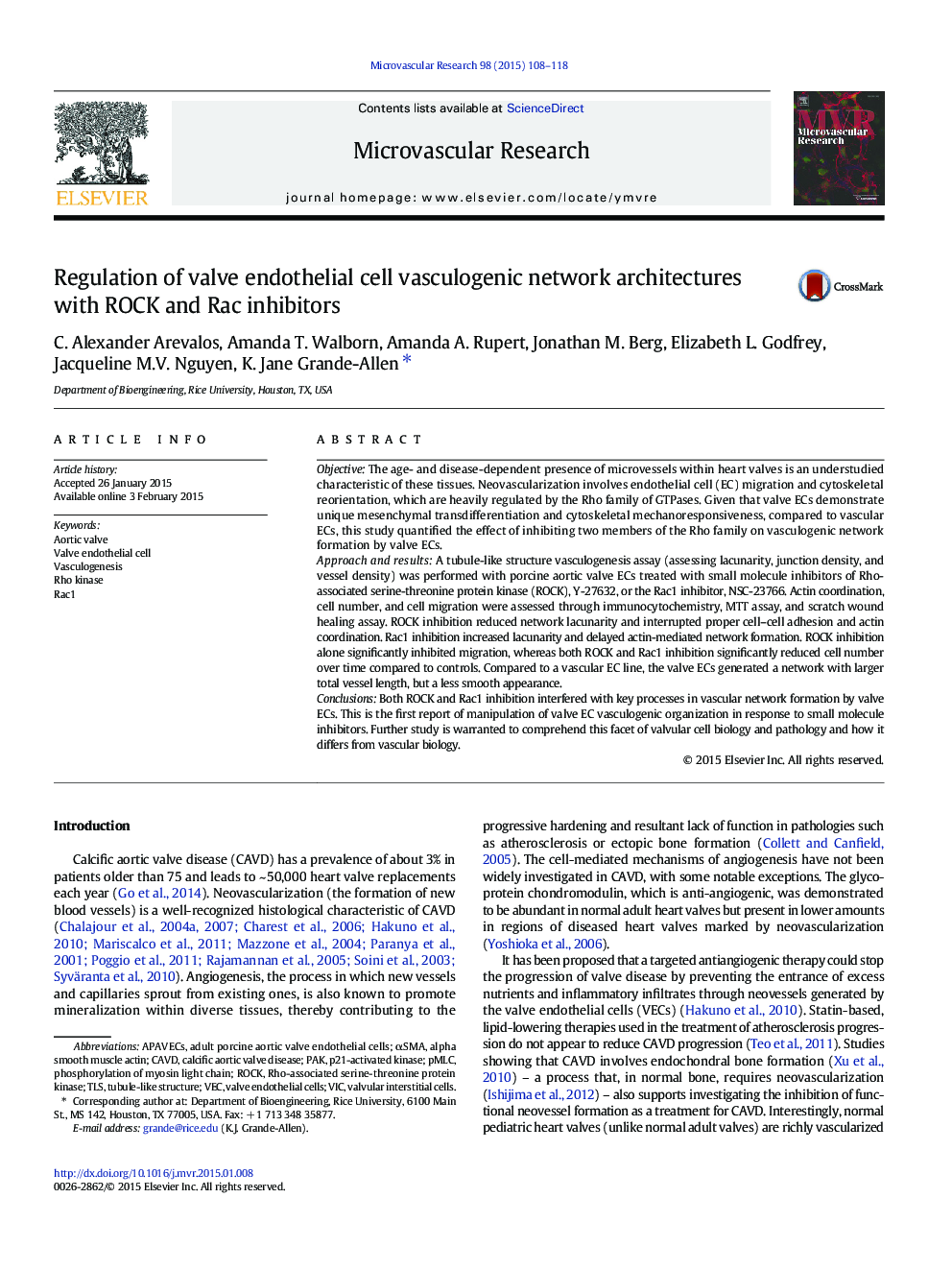| کد مقاله | کد نشریه | سال انتشار | مقاله انگلیسی | نسخه تمام متن |
|---|---|---|---|---|
| 1994823 | 1541286 | 2015 | 11 صفحه PDF | دانلود رایگان |

• CD31+ adult porcine aortic valve endothelial cells (VECs) cultured in vasculogenic matrigel model
• ROCK inhibition increased network complexity while ablating proper tube-like formation
• Rac inhibition decreased network complexity but did not affect tube-like architectures that formed
• Immunocytochemistry localized changes in cell-cell organization during ROCK and Rac inhibition
• VECs were directly compared to a vascular endothelial line which displayed smaller total networks and smoother appearance.
ObjectiveThe age- and disease-dependent presence of microvessels within heart valves is an understudied characteristic of these tissues. Neovascularization involves endothelial cell (EC) migration and cytoskeletal reorientation, which are heavily regulated by the Rho family of GTPases. Given that valve ECs demonstrate unique mesenchymal transdifferentiation and cytoskeletal mechanoresponsiveness, compared to vascular ECs, this study quantified the effect of inhibiting two members of the Rho family on vasculogenic network formation by valve ECs.Approach and resultsA tubule-like structure vasculogenesis assay (assessing lacunarity, junction density, and vessel density) was performed with porcine aortic valve ECs treated with small molecule inhibitors of Rho-associated serine-threonine protein kinase (ROCK), Y-27632, or the Rac1 inhibitor, NSC-23766. Actin coordination, cell number, and cell migration were assessed through immunocytochemistry, MTT assay, and scratch wound healing assay. ROCK inhibition reduced network lacunarity and interrupted proper cell–cell adhesion and actin coordination. Rac1 inhibition increased lacunarity and delayed actin-mediated network formation. ROCK inhibition alone significantly inhibited migration, whereas both ROCK and Rac1 inhibition significantly reduced cell number over time compared to controls. Compared to a vascular EC line, the valve ECs generated a network with larger total vessel length, but a less smooth appearance.ConclusionsBoth ROCK and Rac1 inhibition interfered with key processes in vascular network formation by valve ECs. This is the first report of manipulation of valve EC vasculogenic organization in response to small molecule inhibitors. Further study is warranted to comprehend this facet of valvular cell biology and pathology and how it differs from vascular biology.
Figure optionsDownload as PowerPoint slide
Journal: Microvascular Research - Volume 98, March 2015, Pages 108–118